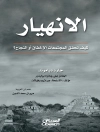The availability of microdata has increased rapidly over the last decades, and standard statistical and econometric software packages for data analysis include ever more sophisticated modeling options. The goal of this book is to familiarize readers with a wide range of commonly used models, and thereby to enable them to become critical consumers of current empirical research, and to conduct their own empirical analyses. The focus of the book is on regression-type models in the context of large cross-section samples. In microdata applications, dependent variables often are qualitative and discrete, while in other cases, the sample is not randomly drawn from the population of interest and the dependent variable is censored or truncated. Hence, models and methods are required that go beyond the standard linear regression model and ordinary least squares. Maximum li- lihood estimation of conditional probability models and marginal probability e?ects are introduced here as the unifying principle for modeling, estimating and interpreting microdata relationships. We consider the limitation to m- imum likelihood sensible, from a pedagogical point of view if the book is to be used in a semester-long advanced undergraduate or graduate course, and from a practical point of view because maximum likelihood estimation is used in the overwhelming majority of current microdata research. In order to introduce and explain the models and methods, we refer to a number of illustrative applications. The main examples include the deter- nants of individual fertility, the intergenerational transmission of secondary schoolchoices, andthewageelasticityoffemalelaborsupply.
Daftar Isi
From Regression to Probability Models.- Maximum Likelihood Estimation.- Binary Response Models.- Multinomial Response Models.- Ordered Response Models.- Limited Dependent Variables.- Event History Models.












